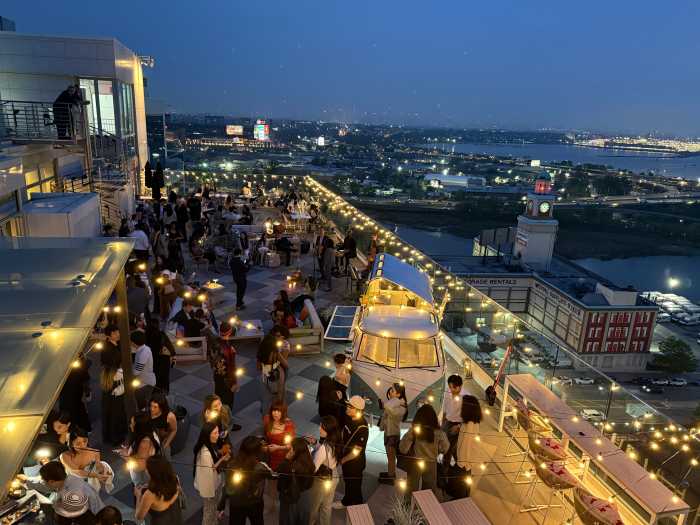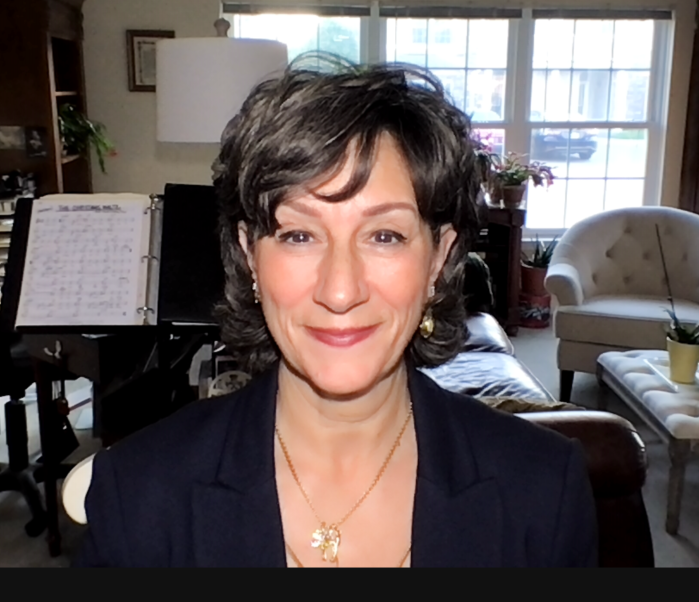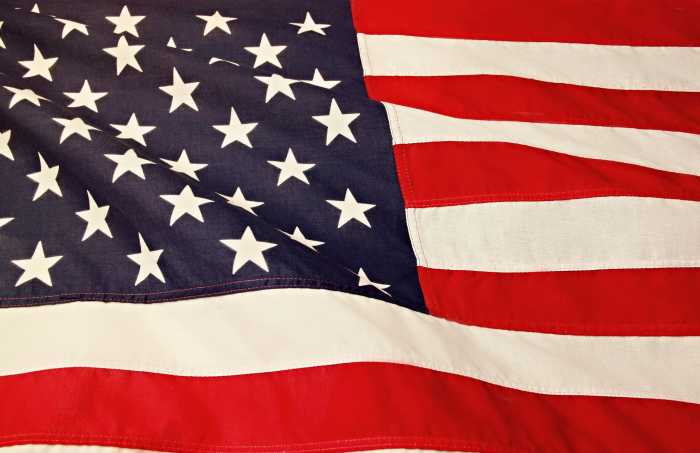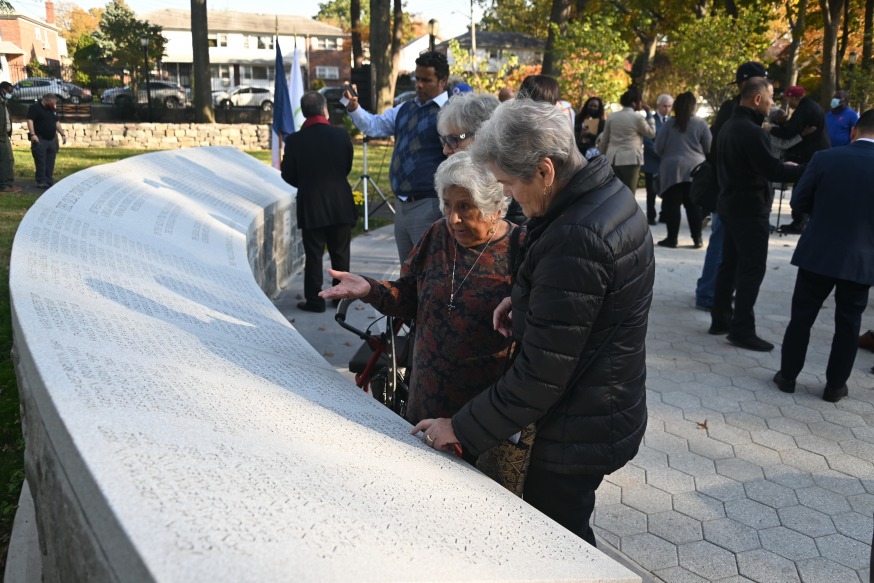
Credit: NYC Parks / Malcolm Pinckney
Nov. 11, 2021 By Christian Murray
Elected officials and community leaders cut the ribbon on a new commemorative plaza at a long-forgotten Flushing graveyard where more than 1,000 people, most of whom were African American or Native American, were laid to rest in the 1800s—before the city took over the site in 1914 to build a playground.
The $1.76 million plaza honors the site’s past as a burial ground, with a memorial wall. The history of the site was not recognized for most of the 20th century, and it was only due to local activist Mandingo Tshaka bringing it to light in the 1990s when the Parks Dept. was revamping the playground.
The site was later renamed Olde Towne of Flushing Burial Ground in 2009 in recognition of its history.
The graveyard, located between164th and 165th Streets north of 46th Avenue, was at various points in the 19th century known as “Pauper Burial Ground” and “Colored Cemetery of Flushing.” In 1931, it was officially named Martins Field, in honor of tree conservationist Everett P. Martin, before being renamed in 2009.
“The reconstructed Olde Towne of Flushing Burial Ground memorial is a fitting tribute to those buried here who deserve dignity and respect and a space for reflection of the past and the promise of the future. This project is the result of the tireless efforts of the community,” said NYC Parks Commissioner Gabrielle Fialkoff.
The project consists of a new memorial wall composed of an etched barre gray granite top that includes the name of the site, a brief site history and 318 recorded names of those buried there.
The center of the new plaza features a butterfly garden to offer a feeling of peace and tranquility, according to the Parks Dept. New benches have been placed around the plaza, surrounded by flowering ornamental trees. Previously existing Cardinal directions have been recreated in the new design to allow for the continuation of Native American ceremonies in the park.
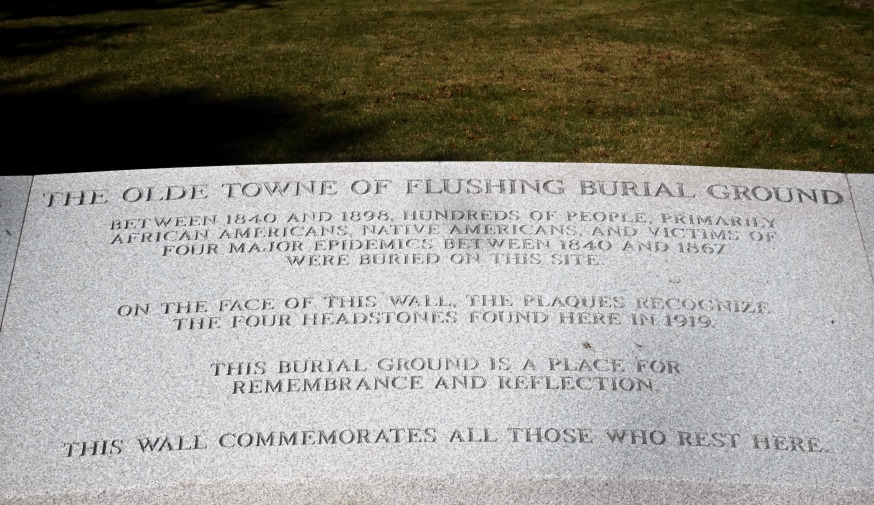
Credit: NYC Parks / Malcolm Pinckney
The site has a long and storied history.
It was purchased by the Town of Flushing as a public burial ground in 1840, according to the The Olde Towne of Flushing Burial Ground Conservancy, which was formed to advocate for the site’s recognition.
Between 1840 and 1898, more than 1,000 individuals were buried there. While most were African American and Native Americans, there were also a number of poor whites, as well as wealthier individuals who died during cholera and smallpox epidemics, who were considered too contaminated for churchyard burial.
The plots were indiscriminately arranged, often unmarked, and as shallow as six inches below the surface.
In 1914, the site was given to the Parks Department. In 1936, a playground was built on the site and a comfort station, wading pool, and sand-pit were later added. The headstones were destroyed.
“The Olde Towne of Flushing Burial Ground’s unveiling is a major milestone in a decades-long effort to right the wrongs done to those who are buried here in this sacred ground,” said Queens Borough President Donovan Richards Jr.
“Their final resting place should be a place of dignity and respect, where their legacy can be properly honored and remembered. Thankfully, this new commemorative plaza, featuring this dignified and impressive memorial, goes a long way toward achieving that goal,” Richards said.
State Sen. John Liu said that it was vital that the site was memorialized.
“At long last this monument vividly restores the important history of this site, a burial ground unjustly desecrated and paved over by the city of New York decades ago in callous disregard for this final resting place of so many African and Native American residents in this community. History must be memorialized so terrible mistakes will not be forgotten and repeated.”
Council Member Peter Koo, meanwhile, said, “It wasn’t easy getting the city to acknowledge the history here, but with today’s ceremony, we let the bones beneath our feet know that times have changed and that we are here to offer respect to those who have been deprived of it in the past.”
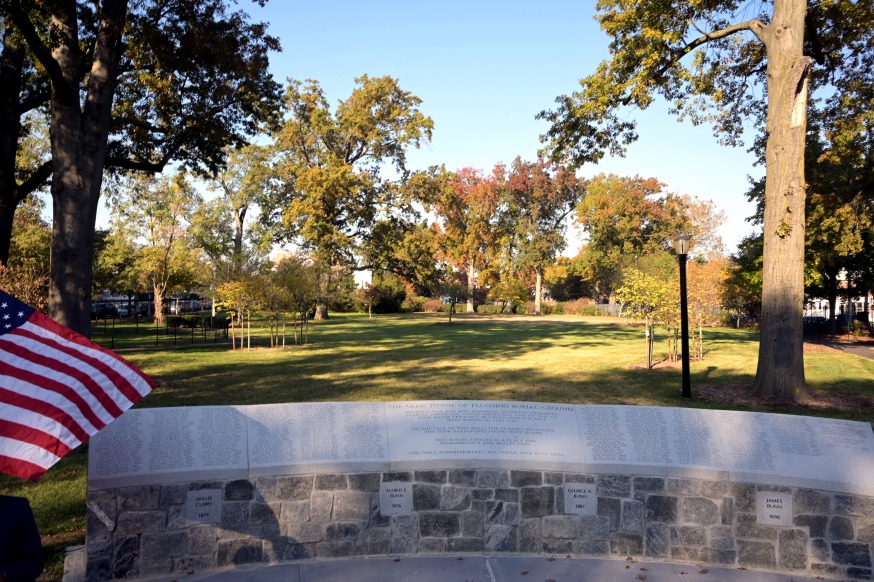
Credit: NYC Parks / Malcolm Pinckney



